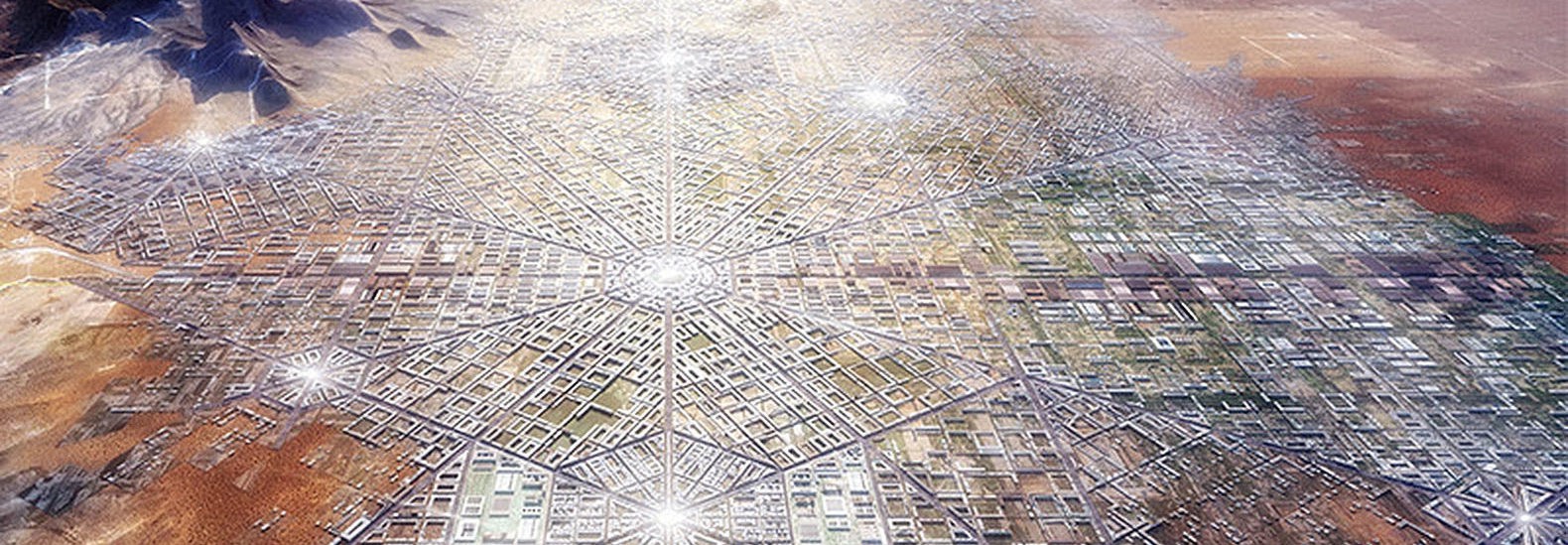PROPOSED ‘BORDER CITY’ BETWEEN U.S. AND MEXICO SOLVES MANY PROBLEMS AT ONCE
by Lidija Grozdanic INHABITAT
View Slideshow
In light of recent global events and the ongoing US presidential campaign, immigration and border control have once again become one of the most polarizing political and economic issues. As a way of offering a viable solution for areas where frontiers meet, architect Fernando Romero of fr*ee has conceived a masterplan for a binational city located on the cusp of New Mexico, Texas and Chihuahua.
Fernando Romero, fr*ee architects, Border City, London Design Biennale, binational city, Mexico, Mexico border, city masterplan, urban design, urban planning
The “Border City”, currently being exhibited at the London Design Biennale, is meant to function as a special zone where cultures “both clash and blend to create something altogether unique”. It draws from various international examples of “border situations” and aims to reconcile different cultural and economic narratives. This model addresses the specific case of the spatial border between the United States and Mexico, but aims to function as a widely applicable prototype of a new border city.
Related: FR-EE Unveils Dynamic Design for Latin American Art Museum in Miami
Fernando Romero, fr*ee architects, Border City, London Design Biennale, binational city, Mexico, Mexico border, city masterplan, urban design, urban planning
Hexagonal in plan, the “Border City” would accommodate over 100 million inhabitants who already populate the states along the border between the United States and Mexico. The masterplan includes a proposal for a regional and local infrastructural and transportation network, including various other elements which the visitors of this year’s London Design Biennale can inspect in person until September 27, 2016.
+ Fernando Romero Enterprise
\
Although some architects may be known for moving the masses with their jaw dropping designs, few can say they have literally moved entire cities. Sweden-based White Arkitekter recently triumphed over 10 other firms to win an international competition to move the city of Kiruna, Sweden. Over a century of iron mining has caused numerous underground cracks to destabilize the ground underneath the small town, and the architects’ amazing Kiruna 4-Ever plan will gradually relocate it over the course of many decades.
White Arkitekter, Kiruna 4-Ever plan, Kiruna, Sweden, architecture, urban planning, city masterplan, Kiruna relocation, iron ore mining, Venice Architecture Biennale, Henning Larsen Architects
Kiruna was founded by a state-run mining company in 1900, and many subsequent years of iron mining since have caused dangerous underground cracks to form beneath the city. This makes relocation an unfortunate necessity for the small town of less than 20,000. The Kiruna 4-Ever Plan is a forward-thinking, yet practical proposal that will slowly shift the mining-dependent town from the west to the east in many stages over the course of several decades.
Related: Swedish City Gives Commuters Free Bikes for Six Months to Reduce the Use of Cars
The Kiruna 4-Ever Plan will first create a new central strip that will run west to east through the current city center. Gradually, the density to the east will be incrementally expanded while the buildings on the west side will be progressively dismantled. Architect Mikael Stenqvist explains: “Literally relocating an entire city, Kiruna will be a bit like a walking millipede with its house and feet – moving, crawling slowly a couple of kilometers towards the east.”
Although the process will be inconvenient for Kiruna residents (to say the least), there are some major advantages to the massive relocation project. As the town rapidly expanded due to its dependence on mining, the city lacked modern infrastructure elements that kept the town fairly isolated. As part of the relocation project, Kiruna will receive a new transport system, including cable cars and freight trains, that will provide better connections to neighboring towns. There are also high hopes that the move will bring new businesses to the area, making it less dependent on iron mining.
Related: Coal Mine to be Repurposed as a Massive Public Complex in Poland
Kiruna’s mining days are relatively limited – once the ore has finally been extracted, the city council plans to develop a public park that could be re-established as a new migration route for reindeer.
+ White Arkitekter
Via Dezeen








Follow Us!